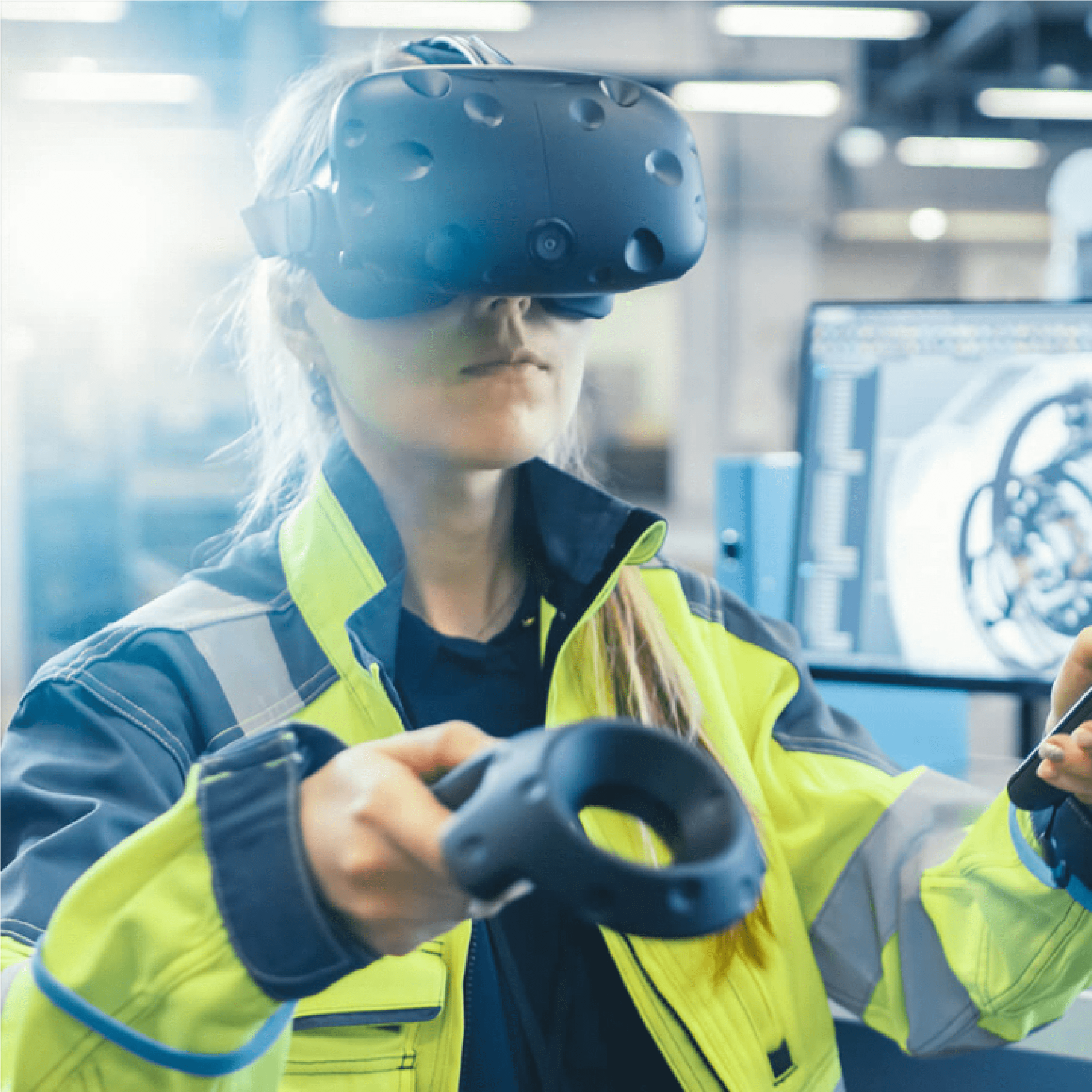Past the interview and hiring process, onboarding and training is one of the most significant ways to introduce new hires to a company’s culture, brand and ethos. Given the rapid rise of remote and distributed workers since the start of the decade—as well as the acceleration of smart technologies servicing this population—innovation is more critical than ever for speed-to-skilling, retention and overall employee satisfaction.
As a result, conventional paradigms of workforce training are rapidly evolving. With the advent of advanced technologies such as Virtual Reality (VR), Augmented Reality (AR), and browser-based interfaces (commonly referred to as Extended Reality, or XR), the efficacy of virtual training has become an increasingly important focal point in shaping the future of remote and distributed workforces across enterprises. The transformative power of virtual training—as well as its role in preparing organizations for the challenges and opportunities of remote work—has been a key accelerant and differentiator in today’s hyper-competitive talent market. And virtual training is playing a major role.

IRL Has Limits
To understand the significance of virtual training, it’s crucial to recognize the inherent limitations of traditional training methods, especially in the context of remote and distributed workforces. The traditional model, relying heavily on in-person sessions or static online modules, often falls short in providing an immersive and engaging learning experience. This inadequacy becomes even more pronounced when employees are scattered across different geographical locations, making it challenging to deliver consistent and effective training.
Added to this, the time, cost and carbon footprint for new joiners to travel to centralized training centers can be astronomical—especially given that as much as 25 percent of employee turnover occurs in the first 180 days of employment. Moreover, other studies have shown 20 percent turnover in the first 90 days, which can be a lot of time and money spent on your newest hires (and potentially their replacements).
More Doing, Less Watching
Enter virtual training, a dynamic approach that leverages cutting-edge technologies to simulate real-world scenarios and foster a more interactive learning environment. VR and AR, in particular, have emerged as game-changers in this space. VR, with its ability to create fully immersive environments, transports employees into realistic, immersive and often photorealistic training scenarios, allowing them to learn by doing rather than just passively absorbing information. AR, likewise, overlays digital information onto the real world, providing contextual and interactive elements that enhance the learning experience. AR is a highly effective way to illustrate process training for field force workers, on-prem and in real time. And VR can take immersive simulation to another level.
For instance, consider a scenario where a sales team is spread across different continents. Traditional training methods might involve static materials and presentations, leaving much to be desired in terms of engagement and knowledge retention. In contrast, VR can simulate a lifelike sales environment, giving employees the ability to practice pitches, react to real-life objections or challenges, adjust to multiple personality types, and interact with virtual clients in a risk-free setting. This not only enhances skills, but also boosts confidence, while better equipping employees with exposure to real-world situations.
Likewise, virtual training is extremely versatile, enabling it to adapt to myriad industries, job roles and content categories. Whether it’s medical professionals practicing complex surgeries in a virtual operating room or engineers troubleshooting machinery in a simulated factory, the potential applications are vast. This flexibility ensures that virtual training can cater to the diverse needs of enterprises, regardless of their industry or specialization.

ACCESSIBLE & GAMIFIED
In the context of remote and distributed workforces, the importance of virtual training becomes even more pronounced. With teams scattered across the globe, the need for a standardized and accessible training platform is paramount. Browser-based interfaces offer a convenient and scalable solution, allowing employees to access real-time training modules from anywhere with an internet connection. This accessibility is particularly crucial for enterprises with diverse teams and varying time zones, ensuring that learning is not restricted by geographical constraints.
IT’S ALSO HIGHLY SOCIAL!
The collaborative nature of virtual platforms can foster a real sense of unity among remote teams. Through shared virtual environments team members can collaborate on projects, participate in group exercises, and engage in real-time discussions. Mimicking the collaborative dynamics of real environments not only strengthens team bonds, but also promotes a collective approach to problem-solving—which is essential to acclimate the complexities of remote work.
Furthermore, the gamification of virtual training adds an element of fun and competition to the learning process. By incorporating game-like elements such as rewards, challenges, and leaderboards, virtual training platforms can motivate employees to actively participate with increased desire to succeed. This gamified approach not only makes learning more Fun (with a capital F) but also enhances knowledge retention by tapping into competition and achievement.
Cost Effective & Scalable
The cost-effectiveness of virtual training adds another layer of significance to its role in the future of enterprises. Traditional training methods often incur substantial costs related to travel, accommodation, and venue rentals. Virtual training eliminates these expenses, offering a more budget-friendly alternative that doesn’t compromise on the quality of the learning experience. This is particularly advantageous for SMBs and enterprises with limited resources, enabling them to allocate funds more efficiently and invest in other areas of growth. As well, virtual training enables companies to scale from one to many without significant resource planning and human capital allocation.
The future of work is flexibility.
The efficacy of virtual training, facilitated by VR, AR, and browser-based interfaces, is quickly reshaping this landscape and preparing enterprises for this decade’s (post-pandemic) challenges of speed-to-market, cost optimization, rapid prototyping, and hyper-scaling. Large enterprise like Delta Airlines, UPS, The Home Depot, Accenture and Walmart are already leveraging this technology with impressive results.
The bottom line is that the immersive and interactive nature of virtual training not only enhances the learning experience, but also equips employees with practical skills that translate seamlessly into real-world scenarios. As traditional ways of working give way to more fluid and flexible models, embracing virtual training is not just a choice—but a necessity—for companies seeking to remain relevant and ahead of their competition.



